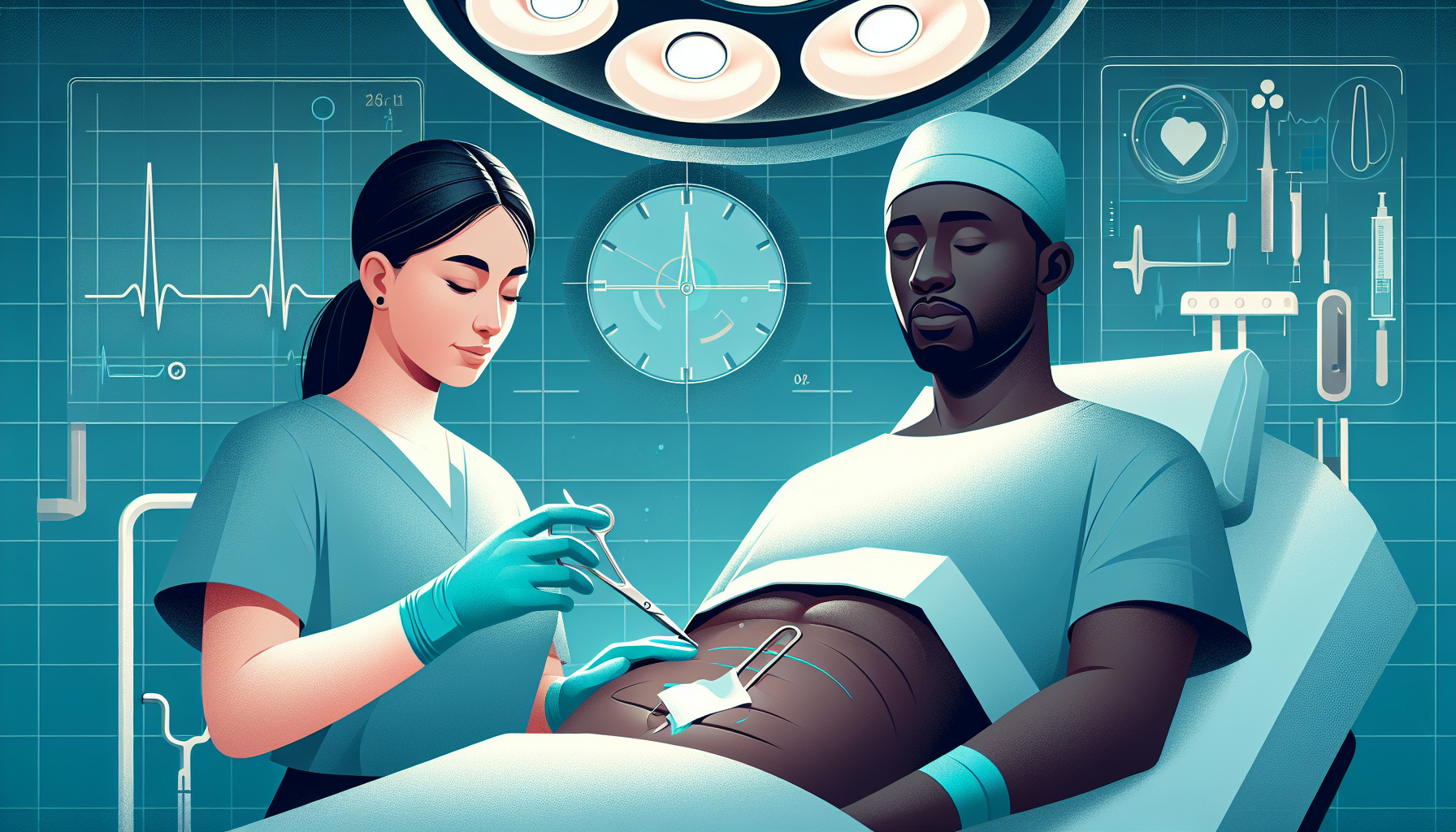Our Summary
This research paper discusses the different ways to manage colonic diverticulitis, a condition where small, bulging pouches (diverticula) in the digestive system become inflamed or infected. The researchers use a particular system called the “Classification of Diverticular Disease” (CDD) to determine how severe the disease is in patients. This system uses CT scans or ultrasounds to categorize patients and determine the best treatment for them.
Patients with acute (sudden and severe) uncomplicated diverticulitis are usually given antibiotics orally or through an IV. However, some studies suggest that for most of these patients, simply managing the symptoms may be as effective as antibiotic treatment.
If the diverticulitis is more complex, for example if there is a significant abscess (a pocket of pus) or a perforation (a hole), then more aggressive treatment is needed. This could involve draining the abscess or surgery to remove the affected part of the colon.
One traditional surgical procedure is called a Hartmann’s procedure, but the study notes that a different surgery called a primary anastomosis is becoming more common. If a patient has sepsis (a serious infection that can cause organ failure), a type of surgery called damage control surgery may be used.
The researchers also suggest that the decision to perform elective (non-emergency) surgery after initial treatment of diverticulitis should be based on the severity of the patient’s symptoms, not on how many times they’ve had diverticulitis in the past. Ongoing complications like fistulas (abnormal connections between organs) and stenosis (narrowing of the colon) are also indications for elective surgery.
FAQs
- What is the “Classification of Diverticular Disease” (CDD) used for in the treatment of colonic diverticulitis?
- What types of surgery might be suggested for more complex cases of diverticulitis?
- How do doctors decide whether to perform elective surgery after initial treatment of diverticulitis?
Doctor’s Tip
Ultimately, the best course of action for diverticulitis surgery will depend on the individual patient’s circumstances and the severity of their condition. It’s important to discuss all options with your doctor and make an informed decision together. Additionally, following a high-fiber diet and staying hydrated can help prevent future flare-ups of diverticulitis.
Suitable For
Overall, patients who are typically recommended diverticulitis surgery are those with complicated diverticulitis, such as those with abscesses, perforations, sepsis, fistulas, or stenosis. Patients with recurrent or ongoing symptoms despite conservative management may also be candidates for surgery. The decision to proceed with surgery should be based on the individual patient’s symptoms, severity of the disease, and overall health status.
Timeline
Before surgery, a patient may experience symptoms such as abdominal pain, fever, nausea, vomiting, and changes in bowel habits. They may undergo tests such as CT scans, ultrasounds, or colonoscopies to diagnose the condition and determine the severity of the diverticulitis.
After surgery, the patient will typically need to stay in the hospital for a few days to recover. They may have a temporary colostomy (an opening in the abdomen to divert stool) or a drainage tube to help with healing. Pain medication and antibiotics may be prescribed to manage pain and prevent infection.
In the weeks and months following surgery, the patient will need to follow a special diet to allow the colon to heal properly. They may also need to gradually increase physical activity and attend follow-up appointments with their healthcare provider to monitor their recovery.
Overall, the timeline for a patient before and after diverticulitis surgery can vary depending on the severity of the condition and the type of surgery performed. It is important for patients to work closely with their healthcare team to ensure a successful recovery.
What to Ask Your Doctor
Some questions a patient should ask their doctor about diverticulitis surgery include:
- What are the different surgical options available for treating diverticulitis?
- What are the risks and benefits associated with each type of surgery?
- How long is the recovery time for each type of surgery?
- Will I need a temporary or permanent colostomy after surgery?
- What are the potential complications of surgery and how are they managed?
- How likely is it that I will need additional surgeries in the future?
- How will my quality of life be affected after surgery?
- What is the success rate of the surgery in treating diverticulitis?
- Are there any alternative treatments or less invasive procedures that I could consider?
- How should I prepare for surgery and what can I expect during the recovery process?
Reference
Authors: Kohler A, Studer P, Brügger L. Journal: Ther Umsch. 2020;77(4):157-163. doi: 10.1024/0040-5930/a001170. PMID: 32772693
